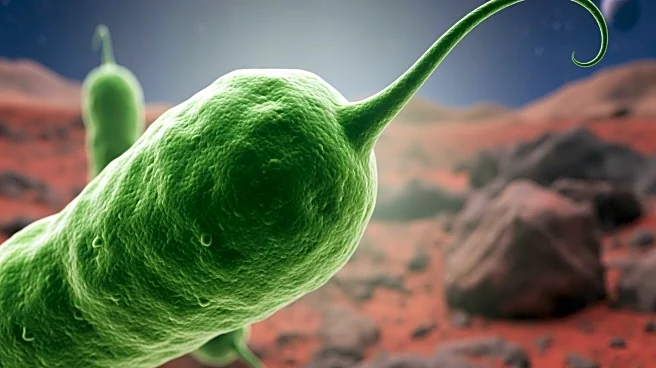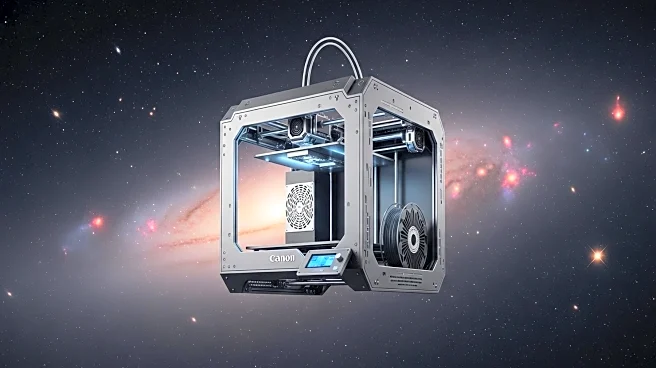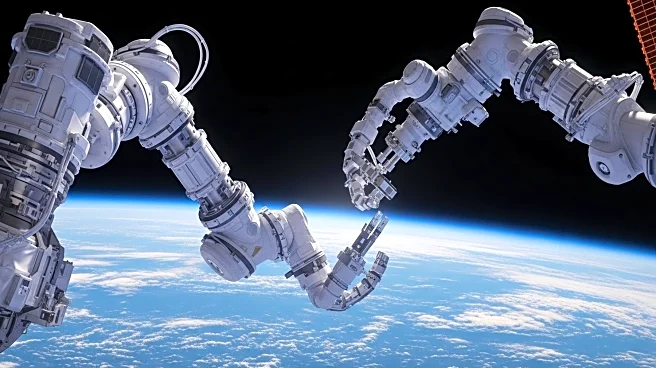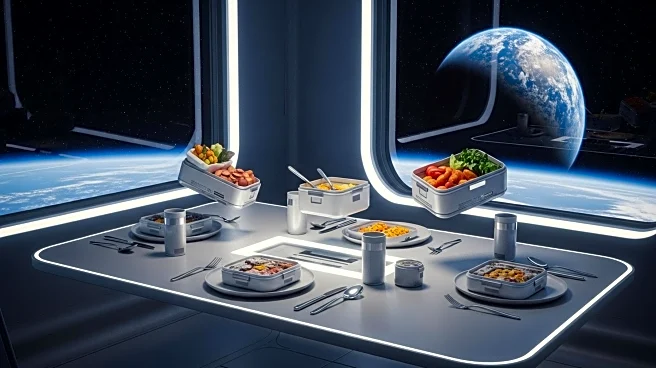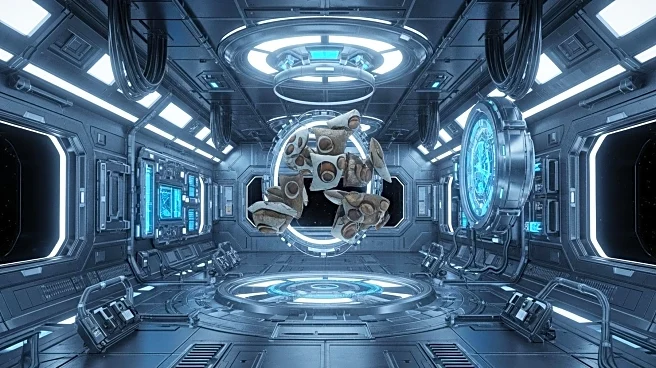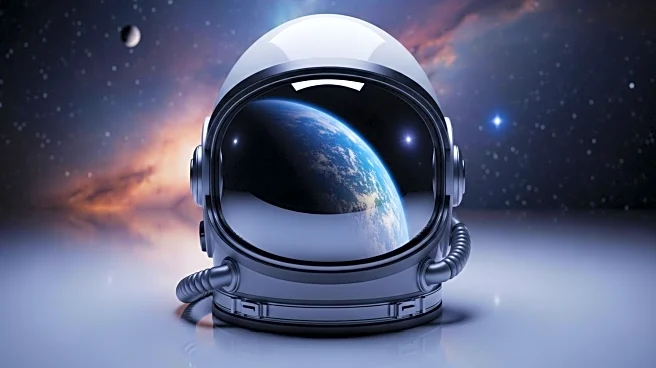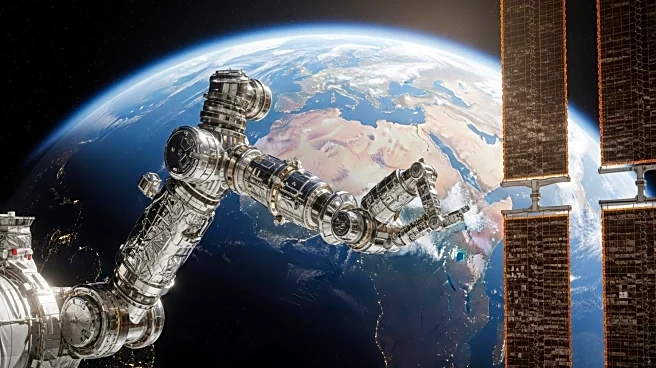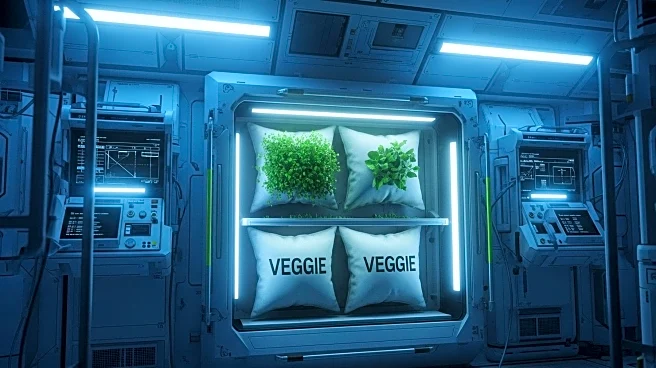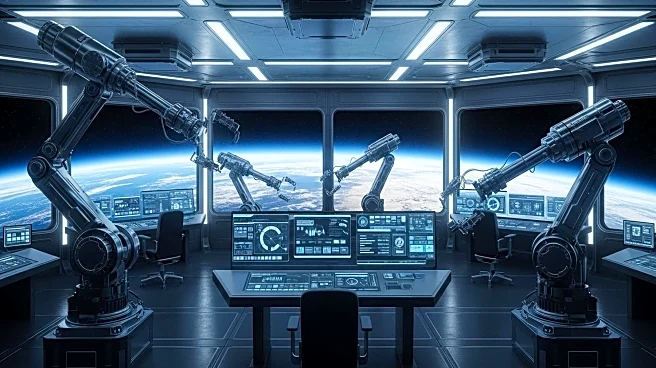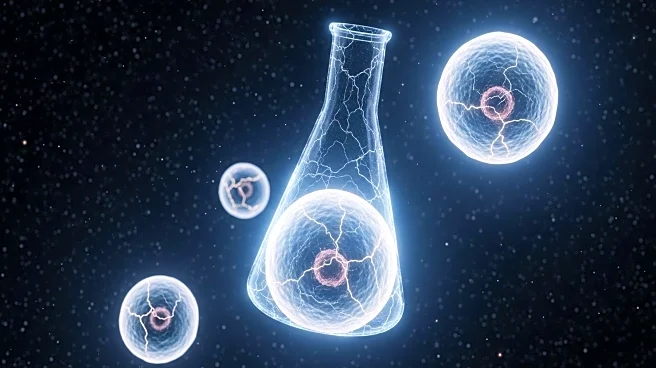What's Happening?
Recent research highlights the capabilities of a cyanobacterium known as Chroococcidiopsis, which has shown remarkable resilience and potential for oxygen production in extraterrestrial environments. Studies conducted on the International Space Station (ISS) exposed this extremophile to harsh space conditions, including UV radiation, for extended periods. Despite these challenges, Chroococcidiopsis demonstrated effective DNA repair mechanisms, allowing it to survive and recover without increased mutations. Additionally, Earth-based experiments revealed its ability to withstand extreme gamma radiation and freezing temperatures, further showcasing its robustness. Notably, Chroococcidiopsis can thrive on Martian and Lunar soil, producing oxygen through photosynthesis, even in the presence of perchlorates, which are typically harmful to Earth-based life forms.
Why It's Important?
The findings regarding Chroococcidiopsis are significant for astrobiology and space exploration, as they suggest a viable method for oxygen production on Mars, which is crucial for future human colonization efforts. The ability of this cyanobacterium to survive and function in extreme conditions could lead to innovative solutions for sustaining life on other planets. This research also contributes to the understanding of how life might adapt to extraterrestrial environments, potentially guiding the development of life-support systems for long-duration space missions. The resilience of Chroococcidiopsis could also inform strategies for detecting signs of life on Mars and other celestial bodies, enhancing the search for extraterrestrial life.
What's Next?
Future missions are planned to further explore the capabilities of Chroococcidiopsis, including studies on how microgravity affects its DNA repair processes. Another experiment, BIOSIGN, aims to investigate the use of far-infrared light for photosynthesis, which could provide insights into life around M-dwarf stars. These studies will deepen the understanding of extremophiles and their potential applications in space exploration. As research progresses, Chroococcidiopsis may play a pivotal role in developing sustainable life-support systems for human missions to Mars and beyond.
Beyond the Headlines
The research on Chroococcidiopsis opens up ethical and ecological considerations regarding the introduction of Earth-based organisms to extraterrestrial environments. The potential for bioengineering extremophiles to support human life raises questions about the impact on native ecosystems and the preservation of planetary integrity. Additionally, the study of such resilient organisms could lead to advancements in biotechnology, with applications extending beyond space exploration to include environmental remediation and medical research.
